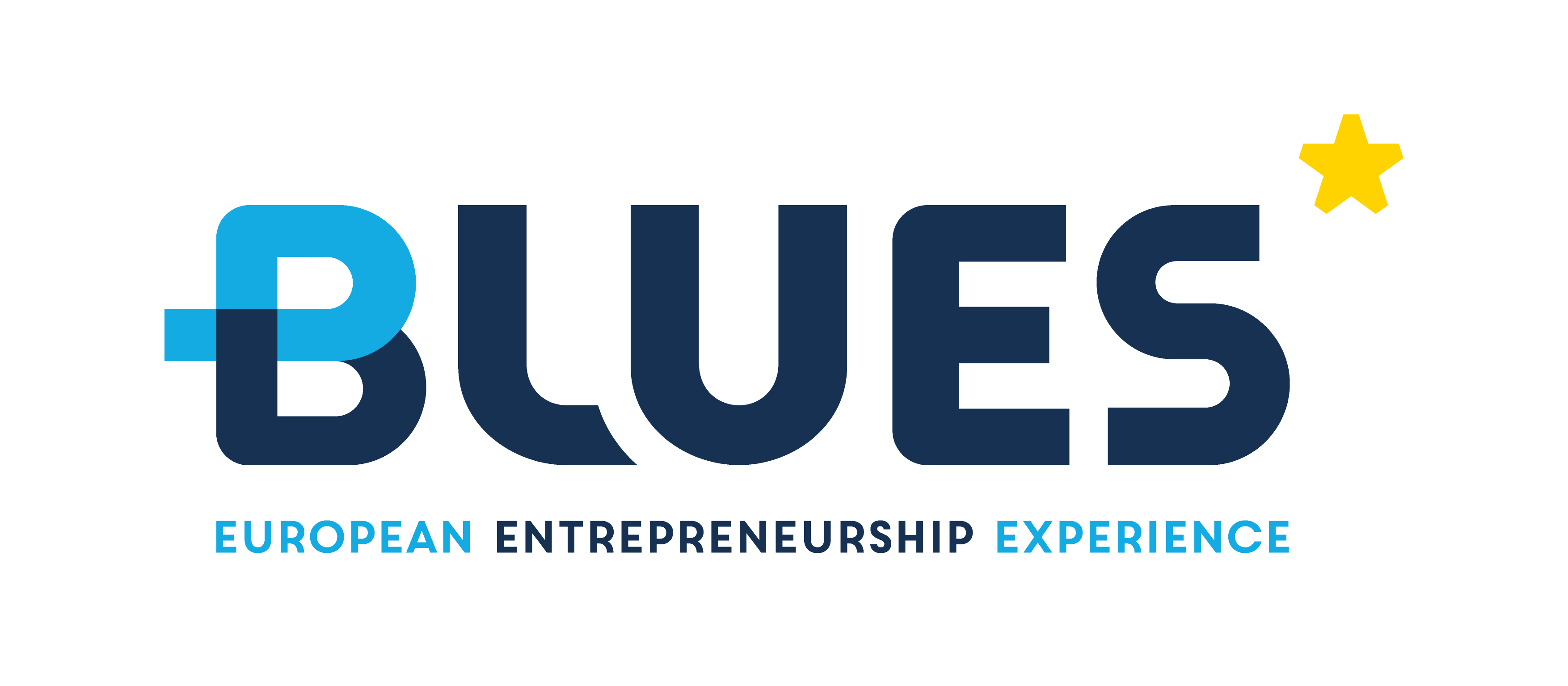Module 4. Organisational Design
Module 4 of the course is about organisational design, which the art of defining tasks and responsibilities within a company by dividing the employees that work in a company into small groups.
This module covers the following topics:
- 4.1 Fundamental of organisational structures.
- 4.2 Delegation. How to delegate tasks to co-workers.
- 4.3 Digital transformation.
- 4.4 Contemporary Forms of Organising.
The instructors for this module are:
- Luca Villa, HR Director at Thyssenkrupp, Acciai Speciali Terni S.p.A. (4.1 and 4.2).
- Francesco Rizzi, Associate Professor in the Department of Economics at the University of Perugia (4.3 and 4.4).
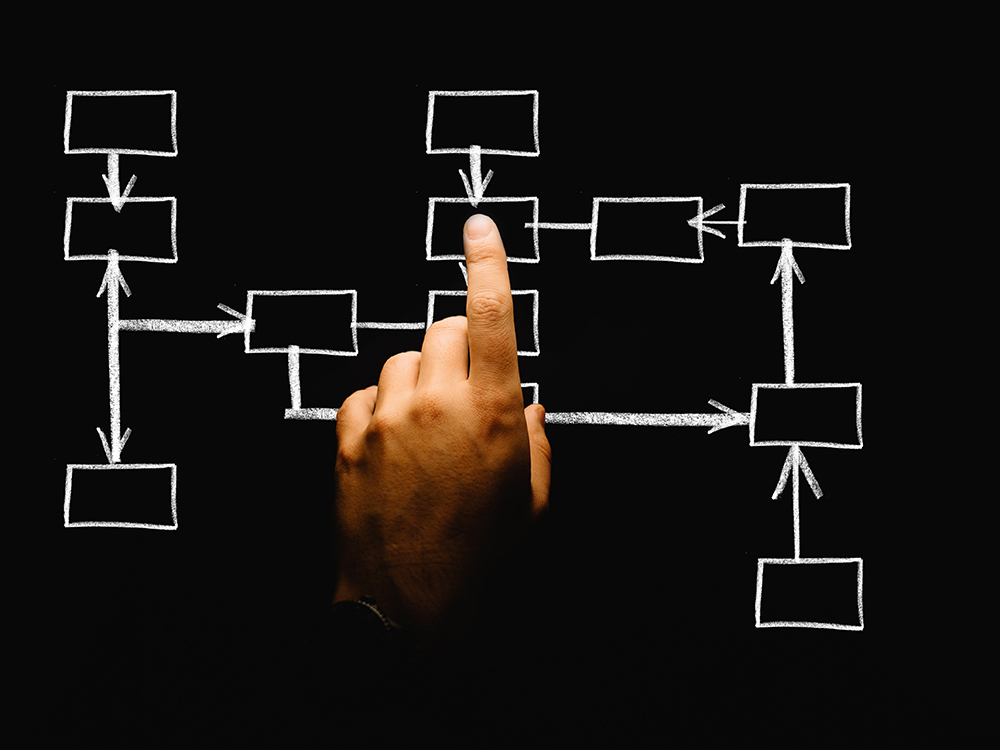
-
4.1 Fundamentals of organisational structures
-
4.2 Delegation. How to delegate tasks to co-workers
-
4.3 Digital Transformation
-
4.4 Contemporary Forms of Organising
-
Complementary Materials
-
Self-assessment Test. Module 4
Organizational design
Organizational design is the art of grouping people into smaller groups that have a specific scope, synergies or set of competencies.
The reason why workers are divided into smaller groups is to make roles and responsibilities clear and to speed up decision-making.
In the more traditional model, the entrepreneur delegates a certain number of managers to take care of specific activities to be performed and targets to be achieved. Each one of them supervises a team that is specialized in those tasks and focused on achieving those targets. This is the so-called FUNCTIONAL STRUCTURE.
Specialization and focus deliver efficiency and, mainly in a stable business environment, also performance.
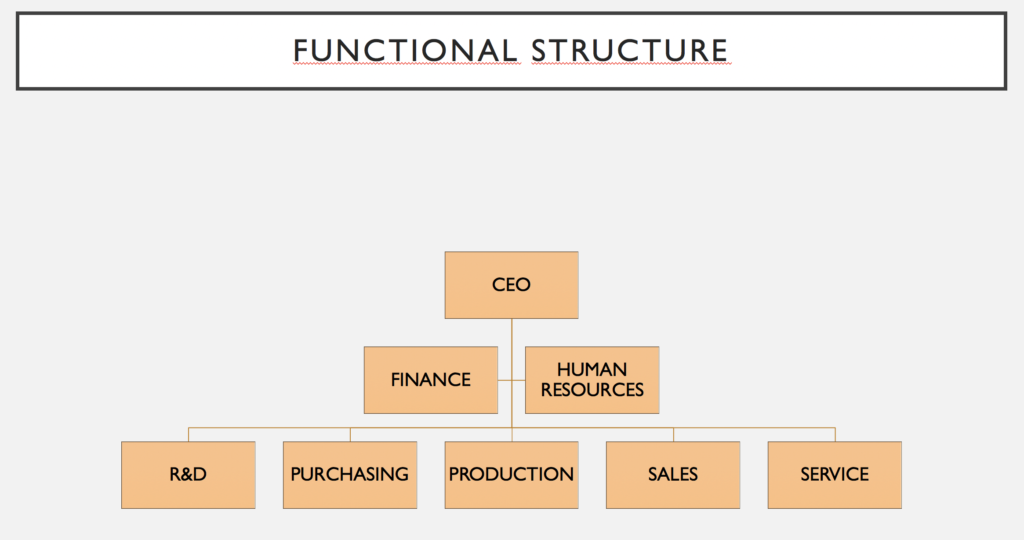
Organizational structures
Saying that one organizational model is good for any enterprise is like saying that one suit is good for every person.
The organizational structure really needs to be tailored on the specific features of the enterprise: aims of the stakeholders, culture of the workers, lifecycle of the enterprise, size, market, products, technology, value chain model, digital maturity etc.
Thinking about the lifecycle: in the startup phase, an enterprise is most likely to be a small community of creative people, with no clear fences around it, a lot of connection and support from the outside, and a structure which is not very stable or clearly designed.
When it gets bigger and more stable in terms of revenue, profitability and customer loyalty, the most common first step is a functional structure, with typical departments like procurement, manufacturing, logistics, sales, service, and support functions – Finance, HR, IT.
When it gets even bigger, multi-products or even multi-sector, serving customers over a wide geographical area, it becomes divisional: each division – for instance for each product family – is like a company inside the company, containing practically all the necessary functions, and it’s a so-called profit center: the performance of the divisional manager is measured by the P/L generated by the division.
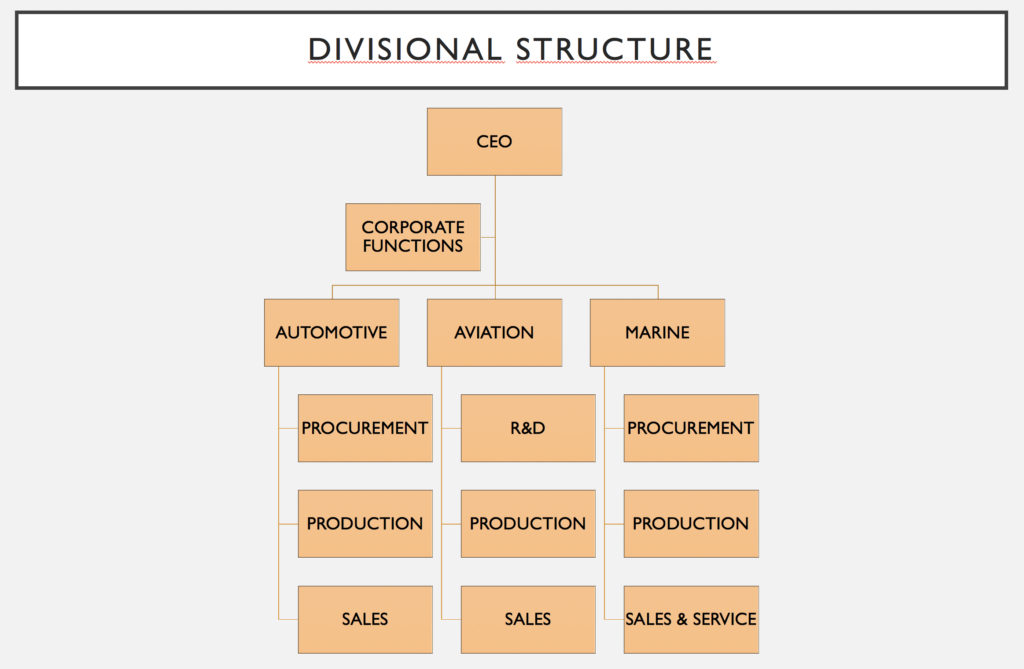
Main trends in designing organizational structures
In large organizations, the need to be flexible in combining and exploiting the resources and competences within requires structures which are more flexible than the solid, monolithic ones described above, that somehow enforce a silo mindset.
Matrix organizations are one kind of solution: each person has two or more reporting lines, based on different drivers – e.g. product, geographical area, function, competence centers etc.
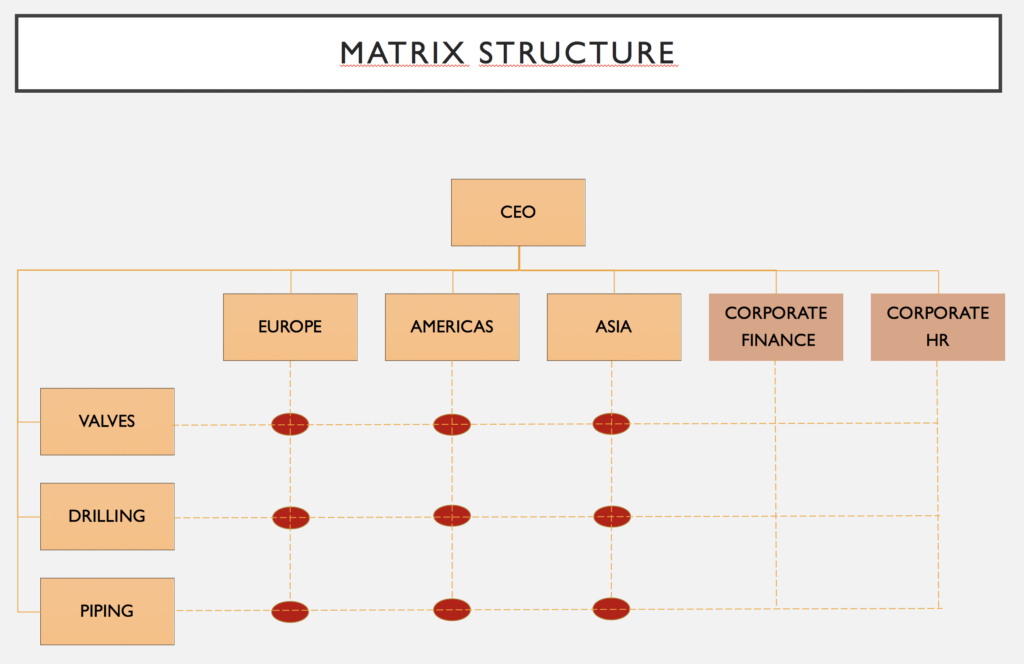
Another way of redesigning the organization to be more effective and dynamic is to review the main processes within, for instance in the active cycle bid-to-order, order-to-cash etc., and around such processes aggregate roles and responsibilities, with solid and dotted reporting lines. This is the so-called process-based organization redesign.

What is delegation and why is it important?
The concept of delegation is embedded in the concept or being a manager: a manager is a person who supervises a team, by assigning to each member a task to be performed with a certain degree of autonomy.
Unfortunately, the world is full of managers who exceed in micro-management: micro-management is the attitude of controlling too frequently or too in-depth the performance of workers, and to some extent doing the job that they should do for them, based on the assumption they are not able or not willing to do it properly.
Managers who exceed in micro-management need to learn how to delegate tasks properly to workers.
How to select the task to delegate
It is a matter of balance. If there is a young, new blue-collar worker in your team, you should start training him/her on any aspect of the functions that he/she has to perform, starting with safety rules. When the worker has been trained enough, he/she is able to do a simple job that is most likely in a context where the technology applied and the operational procedures in place define a small garden where the worker can play.
If instead your team member is an experienced technology engineer, or even a manager and you are a senior manager, you can entrust them with fully carrying out the activities within the scope of their position. He/she has clearly-defined duties and is accountable for delivering relevant results.
How to delegate effectively
The first thing that must be done to delegate effectively is to make the receiver aware of the results expected and the objectives that he/she has to achieve.
In order to do that, many companies, at least the more structured ones, implement a performance management process: in its simplest version, this is a system where the person and his/her manager have a conversation at the beginning of financial period in order to fix the main targets for that period; at the end of the period, they have another conversation to appraise to what extent the targets have been achieved.
The objectives should be defined based on the famous SMART formula, which stands for:
- Specific
- Measurable
- Achievable
- Relevant
- Time-Bounded.
Another important enabling factor entails defining the resources available to the person for achieving the specified targets. Resources can be expressed in terms of money, timeframe, staff, data, relations etc. All this should be made clear to the employee in order to help him/her to begin from day one with full ownership and trust.
While the worker is striving to achieve the targets, especially when the actions taken are not delivering the results expected, the manager should give him/her ongoing feedback. There should not be too much criticism, but instead the person should be encouraged to realize that the direction taken is not satisfactory and to develop new ideas on the adjustments to be taken.
At the end of the period, to close the performance management process, it makes sense to sit at the table with the employee and give him/her final feedback: if the overall results of the job performed have been satisfactory, positive feedback and some kind of reward, even symbolic, will encourage the person to continue to improve. If results are not so good, sincere feedback with good advice on the aspects to be improved will help him/her to take the right direction in the future.
Digital transformation
Digital transformation is the integration of digital technologies into all areas of a business, fundamentally changing how you operate and deliver value to customers.
It’s not just a matter of access to new technologies, but it’s a real cultural change that requires organizations to continually challenge the status quo, experiment, and get comfortable with the grounded-in-data management of both success and failure.
Industry 4.0 is a clear example of the profound opportunities stemming from a digital transformation consisting of automation and data exchange in manufacturing technologies.
It includes cyber-physical systems, the Internet of things, cloud computing and cognitive computing.
In Industry 4.0, cyber-physical systems communicate and cooperate with each other and with humans in real-time. This enables the optimization of processes both internally and across the organizations involved throughout the value chain.
Digital transformation and decentralization
Digital transformation offers the opportunity to opt for centralization or decentralization depending on your needs.
What’s the difference between these two strategic options?
Centralization is based on hierarchy decision-making, central control, authoritarian approach and the strict coordination of resources. Centralization is thus often a good option for improving uniformity, fast execution and accountability.
But what happens when centralizations imply an overcharge of information to the top of the pyramid in an organization?
Decentralization might be useful for improving participation, empowerment, creativity, adaptation and diversification at the different levels of an organization.
But decentralization does not just refer to the dynamics of internal control. Decentralization might also refer to new structures of the supply chain, through a stronger integration of information flows between suppliers and customers, or even new structures of the innovation process.
Open innovation and crowdsourcing are two clear examples of how organizations can leverage the coordination of digital flows of information to evolve internal search and outsourcing towards the activation of external repositories of knowledge and capabilities via digital technologies.
How to manage talent
Being a dynamic, interconnected and digitally advanced organization can also help with being an attractive organization.
Digital technologies might be an extraordinary driver and vector of organizational culture and organizational identity.
Be careful though, as not everything that is digital is good!
Look, for example, at the recruitment and selection phases, where it is easy to find evidence that all the advantages that you can have in developing a digital strategy for recruiting people might be counterbalanced by an improper use of information from the online world for selection purposes. Information out of context might be easily misunderstood and misinterpreted, which might affect the reliability of the entire process.
This means that digital technologies do not automatically add value to talent management, but there is an increasing variety of digital solutions that offer a flawless service, reduce resistance to change, increase commitment, transparency, and -generally speaking- improve the quality of the lifecycle of relationships within the organization.
Just be wary of universal solutions, consistency throughout every HR process of your organization is of fundamental importance to take advantage of digital technologies for talent management.
Why are organisations becoming more open?
Globalization, innovation and the servitization of the economy are imposing a change of pace in the evolution of organizations.
Devoting large amounts of internal resources to following this evolution might be risky, ineffective and quite limited in terms of results.
Openness is thus becoming increasingly important for groups and teams of all sizes working together to achieve shared goals in a resource efficient way, especially when time is the scarcer resource.
An open organization is an organization that engages participative communities both inside and out in order to responds to opportunities more quickly and to inspire, motivate, and empower people at all levels to act with accountability.
The decision to go more open or more closed depends on the way you intend to manage the trade-off between the sharing of profits and risks throughout the technological lifecycle, from exploration to exploitation.
A learning organization is an organization that promotes the learning of its members as a means to continuously transform itself.
Learning organisations
A learning organization is thus an organization skilled at creating, acquiring, and transferring knowledge, and at modifying its behavior to reflect new knowledge and insights.
Basically, it’s a matter of evolving the way you manage continuous improvement programs, which are becoming a standard practice that often result just in a cosmetic change without prior outcomes in terms of learning.
Learning organizations should not only have the ability to achieve an improved understanding of their processes, but also the ability to act accordingly, generating a continuous loop of knowledge acquisition and implementation.
The building blocks that distinguish a learning organization from a traditional organization are the ability to apply system thinking concepts, to engage personnel in learning from the experiences and best practices of others, to effectively transfer knowledge throughout the organization.
Interestingly, these are building blocks that can also be easily recognized within talent groups in all kinds of innovation hubs.
Boundaryless organisations
Following what we have discussed so far, boundaryless organizations are structures that put the coordination of free flows of information and ideas at the heart of the innovation process in a world that’s constantly changing.
By dismantling traditional organizational structures, their vertical and horizontal borders and hierarchies, they empower carriers of abilities, skills and knowledge and tend to fasten project-specific trial and error processes.
Their core values and strong vision are based on transforming a diversity of competencies, cultures and experiences into a competitive factor.
Digital technologies enable the virtualization of the relationships between members of the virtual organization.
In rapidly-evolving industries, virtual organizations are a good option if you have a decreased need for supervisors and middle management and you want to speed up the decision-making process and the processing of information because of the reduced number of layers in the organization.
Recommended Readings (external links):
- Building a Learning Organization, by David a. Garvin (Harvard Business Review)
- Industry 4.0. Challenges and solutions for the digital transformation and use of exponential technologies (Deloitte)
- Recruiting in the digital age. How to attract top talents to your business (Careerteam)
- HR Structures today, by Mercer’s Karen Shellenback (Mercer select)
- Digital Transformation Socoreboard 2018 (European Commission)
- Strategy, not Technology, Drives Digital Transformation (MITSloan Management Review)
- e-Recruitment Developments, by Linda Barber (IES Research Networks)
- Industry 4.0 (European Parliament)
- Global Recruiting Trends 2018 (Linkedin. It is necessary to register-in in the platform)
- Managing Digital Transformation (SSE Institute for Research)
- Putting social media to work. Lessons from employers (CIPD)
Recommended Videos (external links):
- Beyond recruitment_ Equal access to opportunities for all | Gustav Borgefalk | TED
- Boundaryless organization
- Definitions in HRM
- Digital Leadership vs Digital Transformation | Nelson Phillips | TED
- Digital Transformation_ Driving Change in Your Organization
- Digital Transformation_ Future Scenarios 2030 | Deloitte
- Effective Delegation within Scaling Businesses
- Emerging Trends in Organizational Structure
- Learning in organizations
- Organizational Structure
- Talent 5.0 – Taking Recruitment Practices to a New Level | Stefanie Stanislawski | TEDxUniMannheim
- The (Emerging) Science of Learning Organizations | Benjamin Riley | TEDxWilmingtonED
- Thomas Power – “The end of organizations as we know them”
